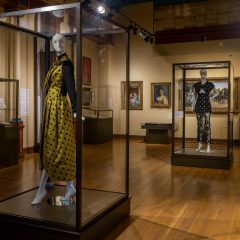How, I wondered, did Drexel University snag the wonderful exhibit, Half the Sky: Women in the New Art of China. The exhibit is a museum-class survey of contemporary Chinese art by women, the first U.S. survey of its kind, with more than half the exhibit filled with work by artists with whom you could well be familiar–artists who have been showing internationally in solo shows in prestigious venues.
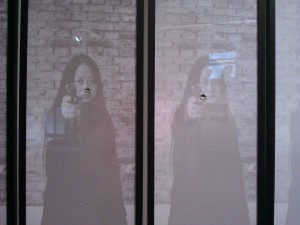
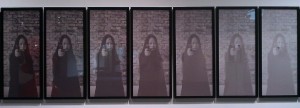
And this is not the first show of contemporary Chinese art at Drexel. The InkNotInk exhibit in 2009 also was excellent (post by Andrea here).
I called Dr. Joseph Gregory, who brought both shows here. Gregory is chair of Drexel’s Art and Art History Department.
This was quite the coup! How did it happen?
My first trip to China was March 2008, to meet with Fan Di’an. Fan is famous in China. He’s the director of the National Art Museum of China, which was created to house China’s visual culture. The museum was one of 10 architectural projects that Mao ordered to be built.

I thought if I could collaborate with him to bring contemporary art from China, it would create quite the splash. Contemporary art from China is one of the hottest sectors of the international art world.
[Fan] turned out to be extremely warm, generous, kind and humble. He had one of his minions bring a stack of work from a recent show. He put them in my lap. I thumbed through and noticed quite a few women artists in that show.
I said so and suggested that a show by women might be an interesting idea. As far as I know, this had not been done outside of China–a survey of contemporary [Chinese] women artists.

I got a tour of the museum, and tried to get a second meeting–a cup of coffee even. The following day, Fan had cleared his calendar to take me and the Drexel entourage to the best Peking duck restaurant in Beijing! He wouldn’t have invited us there if he wasn’t interested. …We shook hands on the deal.
But there was still resistance on our side, from my own team members. People said, in the West people wouldn’t be interested in a show of just women artists. Then a collector tried to dissuade me, saying it was all male artists who were the hot tickets. My instincts were this was a great idea!
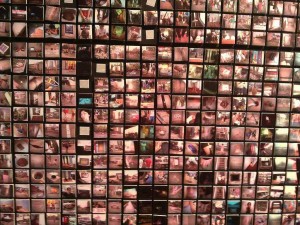
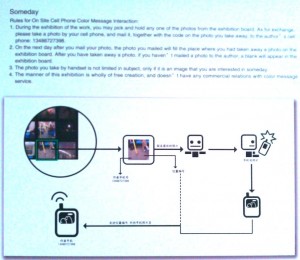
We didn’t really have a dedicated art space of sufficient scale to accommodate the show, so we were going to put it in the Armory, but there’s no air conditioning, no walls. We would have had to build them–that’s expensive.
It was a long and bumpy road with many trips to China. We sat in meetings with officials at the museum. We went to many women artists’ studios and we came to a list. Some I wouldn’t have chosen.
Fan had chosen Xu Hong, a woman senior curator, as the point person. Fan always attended the meetings. I was more and more impressed with the quality of the art I was seeing. Cao Fei is a genius, one of four who represented China in the 2007 Venice Biennale. Yin Xiuzhen, (she made the big heart piece, Engine), was also in the 2007 Biennale. She also had a single show in MoMA. I tried to beef up the presence of artists who are outstanding and well-known to give greater presence to the show.
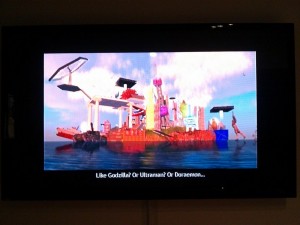
Why women artists?
The women artists really grapple with all the issues that confront the Chinese people that male artists address—the dizzying speed of urbanization and the explosion of mass media culture, which pits itself against traditional ideas and values. [The Chinese] have a dynamic relationship between the forces of the past and the forces of the present. They still have people practicing traditional ink painting. And yet you have this infusion of Western mark-making and ideas–eagerly adapted for contemporary Chinese purposes. Past and present, East and West, it’s an art scene of great innovation and inventiveness.
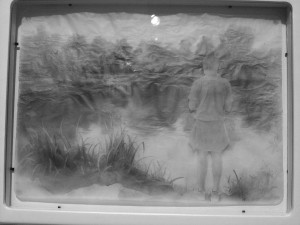
[Gregory added that the women face the same issues as the men, and it is reflected in their art, issues like the destruction of traditional villages, dislocation and uprootedness from globalization, and the influence of mass-media culture on consciousness.]
What about the use of video in the show?
[Among the things Gregory answered was that the video reflects the amount of culture coming in via the screen–tv, internet, movies. He said Fei’s Whose Utopia video reflects Chinese success as a manufacturing power and individuals’ lost dreams.]
Is China any different from anywhere else in terms of development and change that’s happening there?
In China it’s just 100 times faster. The Beijing airport has the largest terminal in the world. The scale of building going on, skyscrapers, in the center of the Beijing, is bigger than anywhere else, with hundreds of post-modern buildings. New buildings are going up so fast, that 10 years is old. The amount of money the government has to promote Beijing as a showplace [is astonishing]. Compared to Beijing, Manhattan is like a village!
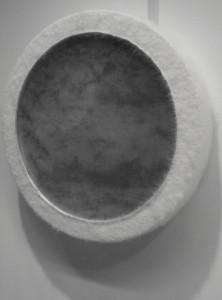
This show is not where the Pearlstein Gallery used to be. What is that building that it’s in, at 3401 Filbert?
It was first a child care center, and then a computer tech center. Since Drexel owned it, about two or three years, it was part of the URBN Center. …The new future Pearlstein Gallery will be there, and will take up about 1/3 that space where the show is. When [Half the Sky] comes down, construction will begin.
[He mentioned a black-box theater also in the works.]
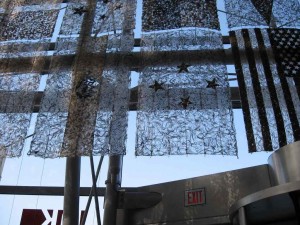
But how did InkNotInk come to Drexel, also a notable and unexpected exhibit?
Ink Not Ink was in April 2009. When we were first in Beijing (in 2008), the Minister of Culture asked if we could find a venue for a show on contemporary ink painting. We were there in March, and he wanted it by December, so it was very short notice. In the end, we had to shoehorn it into multiple spaces. I recurated the show–augmented it for an American audience to include the Wenda Gu piece (flags made of hair), which got a lot of press.


